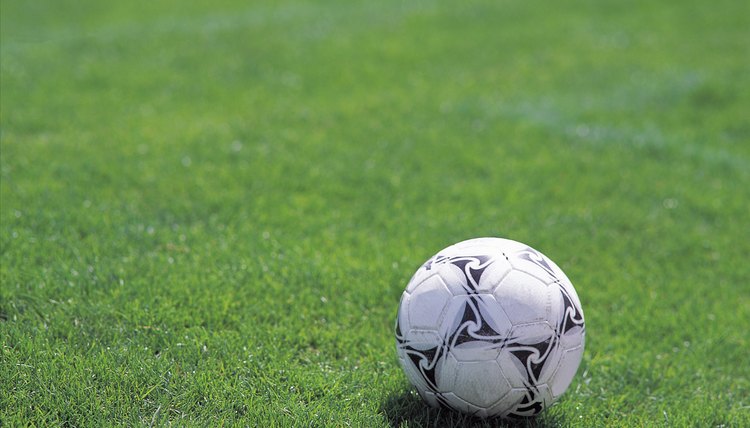The Five Principles of Attacking & Defending in Soccer

Like all sports, soccer has developed its contemporary tactical systems through generations of evolution. Although they may not be definitive, that the five principles of attacking and defending were put to paper and submitted officially in a book endorsed by the highest soccer governing body in England gives the principles a credibility that led to a central role in any discussion of tactics or coaching strategy in the sport.
History
The five principles of attacking and defending in soccer were first posited in a manual published originally in 1967 by Allen Wade called “The F.A. Guide to Training and Coaching.” “F.A” is the English Football Association, British soccer’s governing body. The book is one of the central texts in the history of soccer’s tactical evolution.
Why They're Important
The five principles of attacking and defending are a fundamental basis for a soccer coach to focus his team’s broader objectives and strategies. According to Allen Wade and other proponents of the principles, every practice and match depends on the successful execution of the principles, so they are indispensable to success in the sport.
Five Attacking Principles
The five attacking principles are penetration, support/depth, mobility, width and creativity/improvisation. Penetration refers to getting inside and behind the defense’s shape. Mobility is an offense’s movement and flexibility, so its shape and direction are never predictable or repetitive. Width is the ability of an offense to use the entire width of the field to spread out a defense and enable penetration or dangerous one-on-one isolation around the field. Creativity or improvisation are the offense’s attacking freedom. As much as the principles is critical, following rote attacking directions make an offense easy to oppose. Improvisation allows attackers to express themselves, be unpredictable and find new ways to forge chances.
Five Defensive Principles
The five defensive principles are delay, depth, balance, concentration and composure/discipline/patience. Delay is the defense’s ability to slow down an offense to disrupt the pace and/or numerical advantage of an attack. Depth is a defense’s placement on the field -- too deep and there is too much space for an offense to hold the ball in front of them, too shallow and there is too much space for an offense to get behind. Balance refers to a defense’s strength all over the field, not just those directly defending the ball. Concentration is a defense’s focus, which is critical to avoid simple mistakes like miskicks that can give opponents undeserved opportunities. Composure/discipline/patience is an intangible that an entire team must possess to maintain defensive shape and the other four principles even while under constant pressure.
References
Writer Bio
Audrey Tramel has been writing articles for a variety of academic and professional journals since 2006. She focuses on health issues affecting adolescents, particularly obesity. With an M.D. and a Master of Public Health, Tramel works as a medical doctor specializing in primary care.
